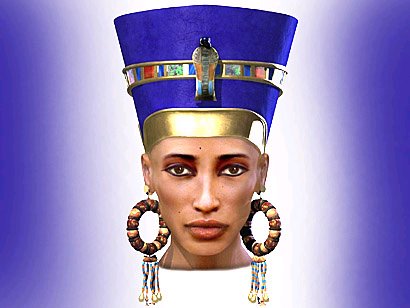Queen Nefertiti bust has two faces, study shows
 Berlin- German researchers have discovered that the bust of an Egyptian pharaonic queen hailed as the world's most beautiful woman actually has two faces.
Berlin- German researchers have discovered that the bust of an Egyptian pharaonic queen hailed as the world's most beautiful woman actually has two faces.
Sophisticated CT scanning technology unearthed the secret of Queen Nefertiti, according to an article published Tuesday in the journal Radiology.
Scientists from the Imaging Science Institute at Berlin's Charite hospital found a carefully carved limestone face under the outer stucco of the bust, according to the article.
"Nefertiti's inner face was not anonymous, but rather delicately sculpted by the royal sculptor Thutmose," said the institute's director, Alexander Huppertz.
The study showed that Thutmose placed stucco layers of varying thickness on top of the limestone core, apparently enhancing some of her features.
"The comparison to the outer face revealed differences, including the angles of the eyelids, creases around the corners of the mouth on the limestone surface, and a slight bump on the ridge of the nose," Huppertz said.
"According to the beauty ideals of the Amarna period, the differences had positive and negative effects and can be read as signs of individualization of the sculpture," he said.
Nefertiti was the chief wife of Pharaoh Akhenaten, who ruled about 1350 BC.
German archaeologist Ludwig Borchardt discovered the bust during excavation work in 1912 and later took it took it to Germany. Some reports suggest he tricked Egyptian customs officials into letting him take it out of the country.
Nefertiti is currently on display at Berlin's Altes Museum, but will be moved to a new home at the adjacent Neues Museum, which opens in October.
The bust has been a subject of dispute between Germany and Egypt for years, with Berlin refusing to allow it to travel to Cairo for the opening of Egypt's National Museum in 2011. dpa